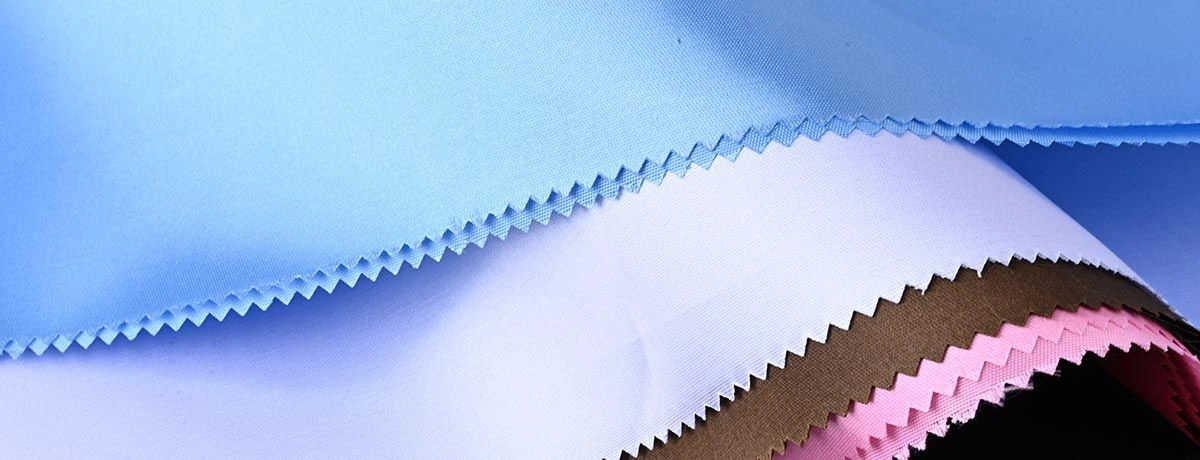Exploring Satin Fabric Types: Uses, Features & More

Introduction to SATIN Fabric
Satin fabric, known for its glossy surface and luxurious feel, has a rich history dating back centuries. Originally woven from silk, satin has evolved to include a variety of fibers, often made from silk, which contributes to its luxurious appearance and feel. Its elegant appearance and smooth texture have made it a staple in fashion and home decor.
Satin can be made from silk or synthetic fibers like polyester and nylon, offering a range of options from luxurious to more affordable and durable choices.
What is Satin Fabric?
Satin fabric is a type of woven fabric characterized by its smooth, shiny surface and soft, luxurious feel. It is made using a specific weaving technique called the satin weave, which involves floating warp yarns across the weft before going under one weft thread and starting the cycle again. This unique weaving method creates a fabric with a high sheen and a smooth, lustrous surface. Satin fabric can be made from a variety of fibers, including silk, polyester, acetate, nylon, and blends of these.
Features and Properties of SATIN Fabric
Satin is renowned for its smooth and shiny surface, achieved through a unique weaving technique that creates a high-gloss finish on one side and a duller surface on the other. This fabric drapes beautifully, making it ideal for garments and upholstery that require a fluid, elegant silhouette. Satin is also valued for its durability and versatility, easily adapting to various uses and styles.
Common Uses of SATIN Fabric
Satin’s luxurious qualities make it a popular choice in fashion design, particularly in eveningwear, lingerie, and accessories. Satin is a popular choice for bridal wear, including traditional dresses and contemporary styles. It is equally favored in home textiles, used in bedding, draperies, and upholstery due to its aesthetic appeal and comfort. Satin is often used for evening gowns due to its luxurious and sophisticated attributes.
A Closer Look at 12 Types of SATIN Fabric
1. Untwisted Satin
-
Raw Materials: Polyester FDY glossy 50D/24F and polyester DTY 75D.
-
Process: Satin weave on a water jet loom.
-
Characteristics: Lightweight, soft, high gloss; suitable for clothing and home textiles.
2. Elastic Satin
-
Raw Materials: Includes spandex yarn for elasticity.
-
Process: Satin weave on an air-jet loom.
-
Characteristics: Strong elasticity, lightweight, ideal for clothing requiring stretch.
3. Slub Satin
-
Raw Materials: Polyester FDY glossy triangular profiled yarn and 150D slub yarn.
-
Process: Satin weave variation, environmentally friendly dyeing.
-
Characteristics: Satin-like shine with a slub appearance, durable, wrinkle-free.
4. Twisted Satin
-
Features a tighter twist for added texture and shine, used in decorative home textiles.
5. Simulation Silk Elastic Satin
-
Mimics the appearance of silk with added stretch, perfect for fashion items needing flexibility.
6. De-lustered Elastic Satin
-
Offers a matte finish with elasticity, popular in contemporary fashion designs.
7. Imported Breathable Satin
-
Combines breathability with satin's signature sheen, ideal for activewear.
8. Gaussian Satin
-
Known for its smooth finish and ease of sewing, widely used in garment manufacturing.
9. Wedding Satin
Heavyweight and luxurious, designed specifically for bridal gowns and formal attire. Slipper satin is also a popular choice for bridal gowns due to its soft hand and smooth surface.
10. Duchess Satin
A premium variant with enhanced sheen and softness, favored in high-end fashion. Rich silk is often made from pure silk, enhancing its luxurious feel.
11. Printed Satin
-
Features vibrant designs and patterns, often used in fashion and interior decor.
12. Embossed Satin
-
Textured with raised patterns, adding depth and interest to home decor and accessories.
SATIN in Fashion Design and Evening Gowns
Satin continues to inspire designers worldwide. Antique satin, with its vintage and soft appearance, is often used in historical costumes and vintage-inspired designs. Its adaptability to both classic and modern trends ensures it remains a favorite in haute couture and ready-to-wear collections. Crepe back satin, with its unique texture, is preferred for elegant clothing items such as evening wear and bridal gowns. From flowing gowns to tailored blouses, satin’s appeal is timeless. Duchess satin, known for its smooth, glossy surface, is used in formal wear such as structured dresses and wedding gowns. Satin garments require special care due to the luxury nature of the fabric.
SATIN in Home Textiles and Upholstery
In home decor, satin brings a touch of elegance and sophistication. It is commonly used in curtains, cushion covers, and bedding, offering a blend of comfort and style. Designers often incorporate satin into upholstery projects for its aesthetic and practical benefits.
Sustainability and Care Tips for SATIN Fabric
Satin fabrics, especially those made from synthetic fibers, offer durability and longevity. Polyester satin is a durable and affordable alternative to silk satin. However, proper care is essential to maintain their appearance. Satin weaves utilize a warp float facing structure, while sateen incorporates a weft float facing design. Hand washing or using a gentle cycle with mild detergent is recommended. Air drying and ironing on a low setting will help preserve the fabric’s luster.
Conclusion
SATIN fabric's versatility and enduring appeal make it a valuable asset across various industries, from fashion to home textiles. Its ability to adapt to different styles and applications ensures its relevance in contemporary design. For those looking to explore the full potential of satin, understanding its diverse types and uses is key to maximizing its benefits.
